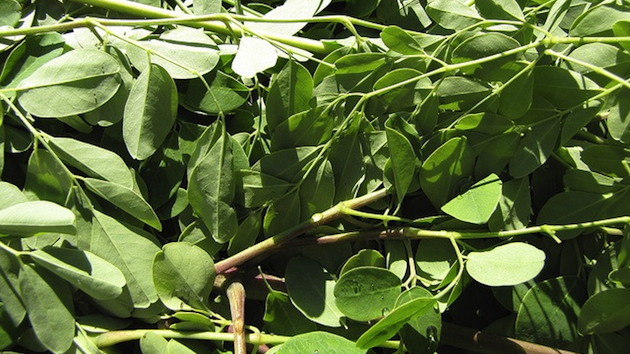
Here’s How Africa Can Fix Hunger Without “Help” from Monsanto
Imagine if Monsanto announced the debut of a genetically engineered superfood—a vegetable rich in protein and essential vitamins and minerals, perfectly adapted to Africa's soils and changing climate.
There'd be howls of protest, no doubt, from anti-GMO activists. But also great adulation—possibly a World Food Prize—along with stern lectures about how anti-science romanticism must not impede heroic corporate efforts to "feed the world."
July 1, 2015 | Source: Mother Jones | by Tom Philpott
Imagine if Monsanto announced the debut of a genetically engineered superfood—a vegetable rich in protein and essential vitamins and minerals, perfectly adapted to Africa’s soils and changing climate.
There’d be howls of protest, no doubt, from anti-GMO activists. But also great adulation—possibly a World Food Prize—along with stern lectures about how anti-science romanticism must not impede heroic corporate efforts to “feed the world.”
Thing is, such superfoods exist in Africa. They exist thanks not to the genius and beneficence of a foreign company, but rather through millennia of interactions between Africa’s farmers and its landscape. And while their popularity waned in recent decades as urbanization has swept through the continent, they’re gaining renewed interest from food-security experts and urban dwellers alike, reports a new article by Rachel Cernansky in Nature.
Cernansky focuses on the work of Mary Abukutsa-Onyango, a horticulturalist at Jomo Kenyatta University of Agriculture and Technology in Kenya, who has since the 1990s been a kind of Johnny Appleseed for reviving appetites for indigenous vegetables in Africa. Here’s Cernansky:
Most of the indigenous vegetables being studied in East Africa are leafy greens, almost all deep green in colour and often fairly bitter. Kenyans especially love African nightshade and amaranth leaves (Amaranthus sp.). Spider plant (Cleome gynandra), one of Abukutsa’s favourites for its sour taste, grows wild in East Africa as well as South Asia. Jute mallow has a texture that people love or hate. It turns slimy when cooked — much like okra. … [M]oringa (Moringa oleifera) is not only one of the most healthful of the indigenous vegetables — both nutritionally and medicinally — but it is also common in many countries around the world.
In a 2010 paper, Abukutsa-Onyango demonstrated the nutritional punch packed by these foodstuffs. This chart, pulled from the paper, shows how African vegetables like the leaves of amaranth, pumpkin, and cowpea (black-eyed pea) plants outshine rival western greens that have been introduced into African agriculture over the past century.
